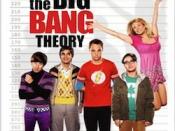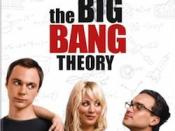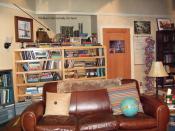What makes the "unknown" so great is the infinite amount of possibilities. Questions like: "which came first, the chicken or the egg?," "how did the universe begin?," or "did 'Adam' have a belly button?," can get anyone, whether a scientist or a teenager, thinking about the endless solutions. Putting the others to the side for now, how did the universe begin? Some people place their theories in a God, or Gods; some use research and evidence to come to a scientific conclusion, but the majority of the population doesn't care. But for the ones that do, there's the "Big Bang" Theory. The "Big Bang" Theory is an arguable idea as to how the universe came to be.
The concept of the "Big Bang" Theory is that the universe went from being small, dense, and hot to large, expanded, and cooling. True or not, the derivation of such a theory starts with Albert Einstein in 1915.
(Sagan) Einstein set forth his general theory of relativity and field equations on which the theory was based. Seven years later, a Russian physicist named Alexander Friedmann solved the field equations, which built up the structure and framework for the "Big Bang" Theory. (Sagan) Edwin Hubble in correlation with the Doppler Effect used the knowledge of the red-shift to prove that the galaxies are moving away from each other as they would from an explosion. This data from 1929 served as the most supporting evidence for the theory. (Sagan) In the 1940's a man by the name of George Gamow manipulated Friedmann's solutions to create a parallel theory in which the universe had expanded from a hot, dense state of matter. (Sagan) Later on, in 1950, an opposing scientist named Fred Hoyle mockingly referred to Gamow's theory as a sheer "Big Bang," but to his...


